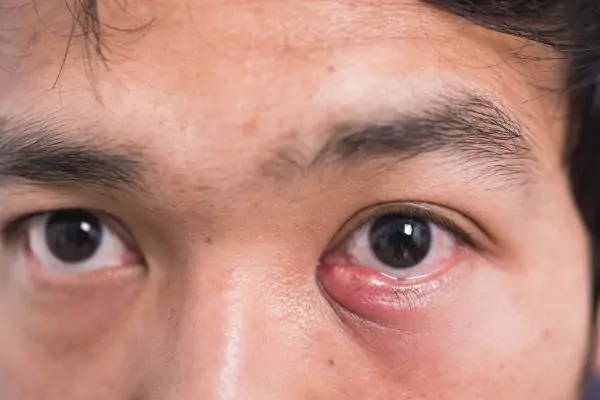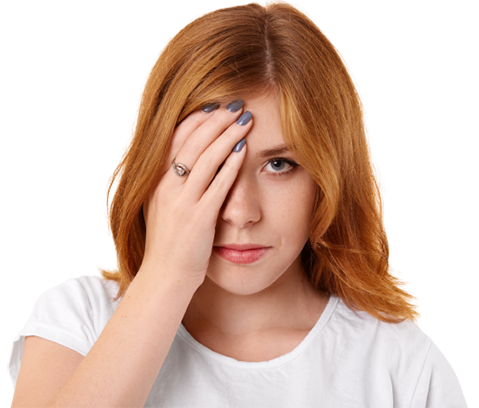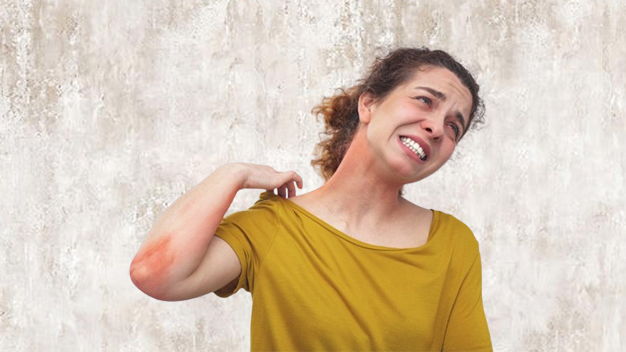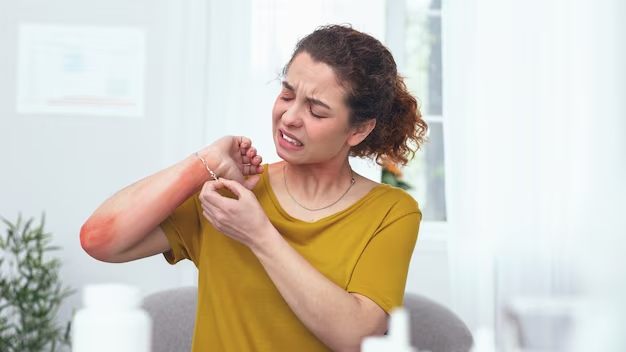On This Page
Blepharitis: Symptoms, Causes, Types, Do’s, Don’ts, Yoga, Ayurvedic Reference and Treatment : Complete Ayurveda Details
अपाङ्गे वा कनीने वा कण्डूषापक्ष्मपोटवान् ॥ ८ ॥
पूयास्त्रावी कृमिग्रन्थिर्ग्रन्थिः कृमियुतोऽर्तिमान् ।
Blepharitis is one of the most common eye disorders. It is defined as the sub-acute or chronic inflammation of the lid margin. It usually affects both the eyes along the edges of the eyelids. It is a condition which commonly occurs when tiny oil glands near the base of the eyelashes become clogged. It is more common among people with poor eye hygiene, those who have high eye strains and people who are exposed to external irritants like dust, wind, cosmetics etc. Improper management of Blepharitis can lead to more severe conditions like Chalazion, Stye, Corneal irritations etc.
As per Ayurvedic concepts, based on the signs and symptoms, we can correlate Blepharitis as Krimigranthi. The disease Krimigranthi is mentioned by Acharyas like Susruta and Vagbhata as a Sandhigata Vyadhi (disease that occurs at the junction of eye parts – here eyelids). The condition can be cured by applying different therapeutic procedures like Sudation, Kneading etc.
Blepharitis is a condition that can be very complicated if left untreated. Even though it directly does not affect the vision, it can cause damage to the cornea and other parts of the eyes over time.
Causes of Blepharitis – Krimigranthi
- Infection
- Malfunctioning of oil glands in eyelids
- Allergic conditions
- Seborrheic dermatitis
- Dry eyes
- Eyelash mites
Signs and Symptoms of Blepharitis – Krimigranthi
- Burning sensation
- Itching sensation
- Watery eyes
- Reddish eyes
- Discomfort and irritation of the eyes
- Swelling of lid margin
- Formation of smaller cysts in lid margin
- Often associated with thick discharge
- Photophobia
- Blepharitis is mainly diagnosed based on signs and symptoms by thoroughly examining the eyes. We can also analyze the swab sample collected from the eyes for determining the infection.
Ayurvedic Reference of Blepharitis – Krimigranthi

Predisposing Factors of Blepharitis – Krimigranthi
- Age – common among children’s
- External irritants like dust
- Severe eye strain
- Unhygienic condition of the eyes
Types of Blepharitis – Krimigranthi
There are 2 types of Blepharitis are present
- Squamous Blepharitis – Caused by metabolic malfunction, unhygienic factors, eye strain etc
- Ulcerative Blepharitis – Caused by bacterial infections – Staphylococcus

IAFA® is the leading Ayurvedic institution in the successful management of a wide range of chronic conditions like Blepharitis. With years of experience IAFA is providing online consultation around the globe though helping peoples through the natural friendly measures of Ayurveda. Institute of Applied Food Allergy® is also having high successful rates in the management of immune system related cases, allergic disorders and skin ailments based on ancient text books.
Reach IAFA for better treatment and feel the real changes!
– Dr. Sahil Gupta (B.A.M.S., M.H.A.)
Ayurvedic Allergy Specialist
CEO & Founder of IAFA®
At last, Easier Blepharitis Management

Trusted by
More than 90,000 Patients

Convenient
at-Home Treatments

9.2 / 10
Customer Satisfaction Score
Ayurvedic Treatment of Blepharitis – Krimigranthi
Krimigranthi is mainly treated by fomentation, scraping followed by application of powder of triphala, and rock salt mixed with honey.
कृमिग्रन्थिं करीषेण स्विन्नं भित्त्वा विलिख्य च ॥६॥
त्रिफलाक्षौद्रकासीससैन्धवैः प्रतिसारयेत् |
Shloka No. 6-7 Chapter No. 11, Sandhisitaasitarogapratishedham of Uttarastahanam by Acharya Vaghbhata
The above shloka explains that Blepharitis is a condition caused mainly by infection of microorganisms. So the main treatment method adopted by Ayurvedic science is by termination of microbes thereby reducing the severity of the condition. Preparations made of purified rock salt and cow dung have antibacterial as well as ulcer healing properties and by giving fomentation with such preparations, the infection will be reduced. It is then punctured and scraped, followed by application of powder of Triphala and rock salt which have excellent antimicrobial action.
The experienced physicians of IAFA also adopt the same line of treatments mentioned in Ayurvedic textbooks along with the unique methods developed by our research team. We have developed efficient medicines under strict guidelines and hygienic conditions that are not only effective in completely curing the condition but also ensures protection to eye sight.
External Medications Includes
- Akshi Tarpana Grutham for netra tarpana
- Triphala varthi
- Elaneer kuzhambu anjanam
- Triphala prakshalan
- Mukkadi purampada
- Shalmali (Salmalia Malabarica) thorn paste application
Single Herbs Used in Treatments of Blepharitis
- Aparajita (Clitoria Ternatea)
- Amalaki (Phyllanthus emblica)
- Yashti (Glycyrrhiza glabra)
- Lodhra (Symplocos racemosa)
- Haridra (Curcuma longa)
Diet in Blepharitis – Krimigranthi
Pathya (Do’s)
- Maintain hygienic condition of the eyes
- Eat healthy food rich in Vitamin A
- Use medium hot, salt, pungent food items
- Eat fresh vegetables and fruits
- Wash eyes regularly in cold water or in decoction prepared using Triphala
- Use Elaneer kuzhambu as collyrium
Apathya (Don’ts)
- Avoid unhygienic conditions
- Avoid dusts, smoke etc
- Avoid oily foods, junk foods
- Avoid eye related cosmetics
Yoga for Management for Blepharitis – Krimigranthi
Yoga is also suggested during the treatment for eye disorders. Pranyama and Savasana can be practiced during the treatment for accelerating the treatment result. Trataka kriya is highly recommended for eye care after the treatment course with the help of Ayurveda methods. Varuna mudra and Jala Samhar mudra is also helpful to treat blepharitis.
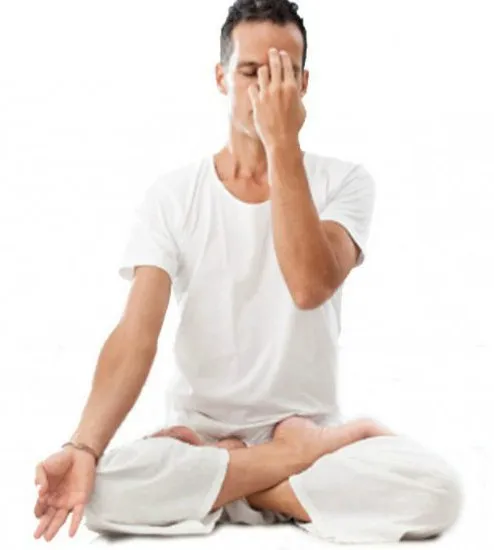
Frequently Asked Questions
Question: Can Ayurveda treat Blepharitis?
Answer: Yes, Ayurvedic treatment is quite effective and safe in blepharitis. Ayurveda focuses on balancing the doshas. The therapies such as – raktaprasadana (blood cleansing) and krimihara (anti-bacterial) are administered.
Question: What precautions should be taken in Blepharitis?
Answer: Some precautions such as – warm compress, gentle massage over the outer eyelids, keeping eyelids always clean, washing eyes twice or thrice a day, cleaning makeup before bed time are the necessary precautions in blepharitis.
Question: What happens if blepharitis is left untreated?
Answer: Long persisting untreated blepharitis can lead to eyelid scarring.
Question: What is Blepharitis?
Answer: As per modern ophthalmology, it may be classified as seborrheic, staphylococcal or of parasitic origin. The science of Ayurveda explains this condition as Krimigranthi.
Question: Is Ayurvedic treatment of Blepharitis safe?
Answer: Ayurvedic medicines are processed naturally and not in the synthetic and chemical form. That’s why, there is no risk or side effects even if the patient is required to take them for a longer duration.
References
- Shloka No. 8-9 Chapter No. 10, Sandhisitaasitarogavijnaneeyam of Uttarasthana by Acharaya Vagbhata.
- Susruta Samhita Uttaratantra by Dr. Anant Ram Sharma, Chaukhamba Subharati Prakashan, Varanasi, 2/9. Page no 18.
- Astang Hridaya. Astanga Hridayauttaratantra by Dr. Brahmanand Tripathi, Nirmalahindi Vyakhayaya, Chaukhamba Sanskrit Pratisthan Delhi. 10/8. Page no. 947.
All the above mentioned measures help to alleviate the condition. As said earlier, Blepharitis can become a chronic condition if left untreated. So timely management of the disease is necessary. IAFA, based on pure Ayurvedic measures, easily helps us to get rid of the condition. Our medicines are prepared from naturally available toxic free herbs and are prepared under sanitary conditions. As one of the leading Global Ayurvedic Institutions, it mainly aims in preparing maximum efficient medicines and treatment procedures based on ancient text books.
Reach IAFA for better treatment and feel the real changes!
Was this Page Helpful?
So IAFA Root Cause Treatment of Blepharitis is Just 3 Steps Away!

01. Connect With Us
Share your history of illness or Book your appointment

02. Consult With Us
Dr. Gupta a certified Ayurvedic Allergist Consultant

03. Root Cause Treatment
Get an accurate diagnosis, medicines, diet & lifestyle change
Blepharitis – Case Studies
Real Case Studies of Successfully Treated Patients from All Around the World by IAFA Ayurveda®
-
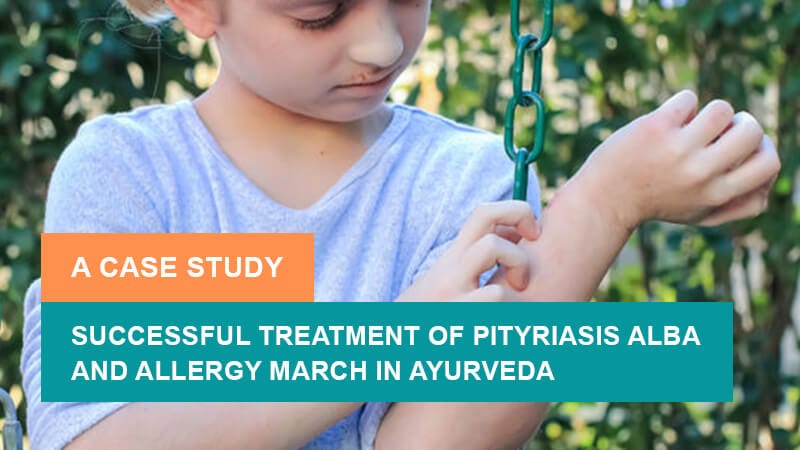
Successful Treatment of Pityriasis Alba and Allergy March in Ayurveda – A Case Study
It is a case study about successful treatment of Pityriasis Alba and…
-

Successful Treatment of Gallstones (Cholelithiasis) with Ayurvedic Medications – A Case Study
It is a case study about the successful treatment of Gallstones (Cholelithiasis)…
-
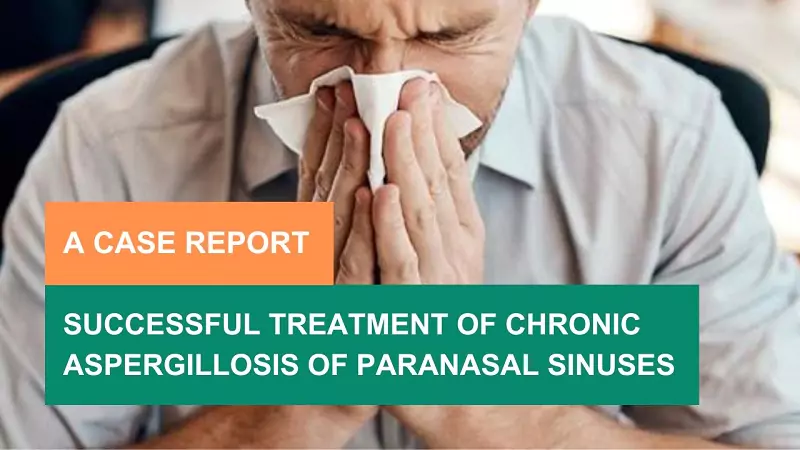
48-Year-Old Male Patient Got Relief from Chronic Aspergillosis of Paranasal Sinuses – A Case Study
Fungal infections can be treated with a high success rate by various…
-

6-Year-Old Child Patient Got Relief from Gluten Intolerance and Wheat Allergy – A Case Study
It is a case study of a 6-year-old Child Patient who got…

